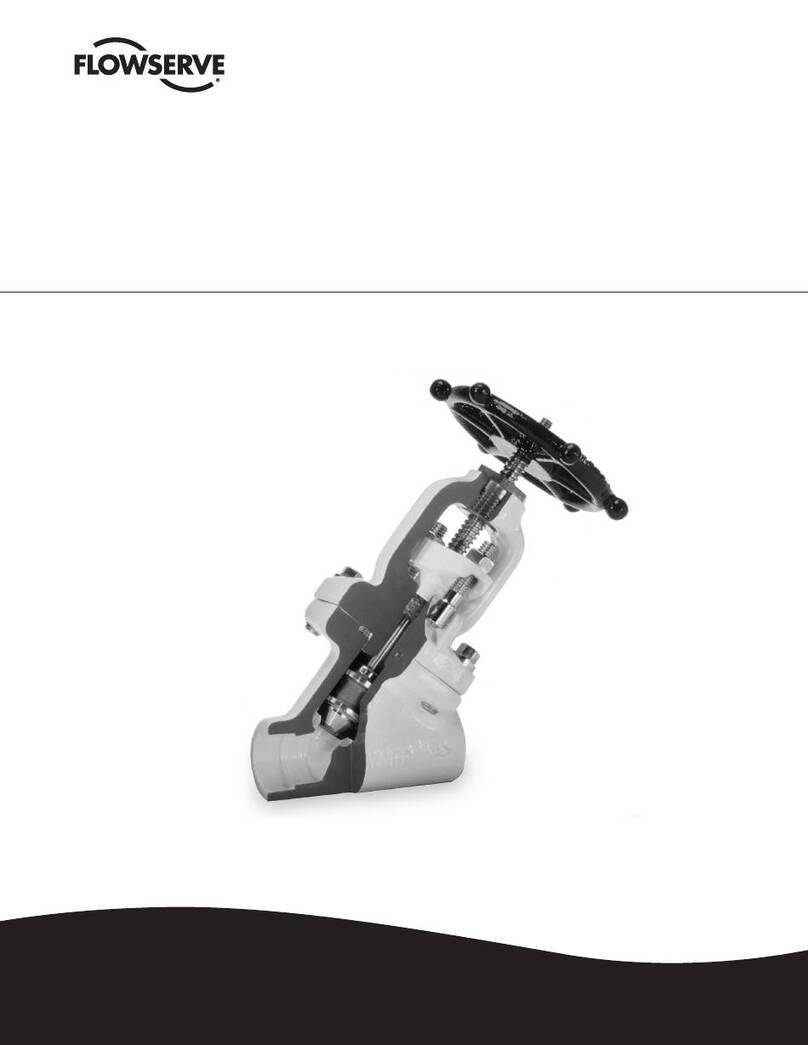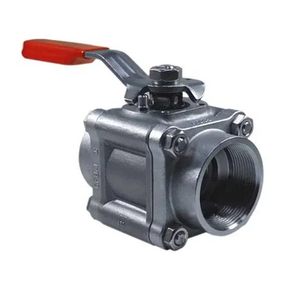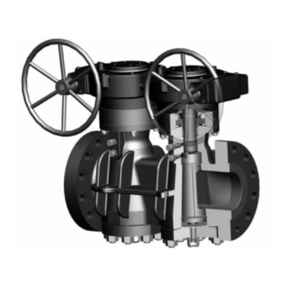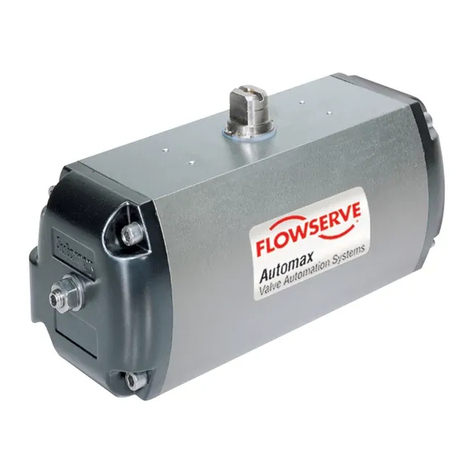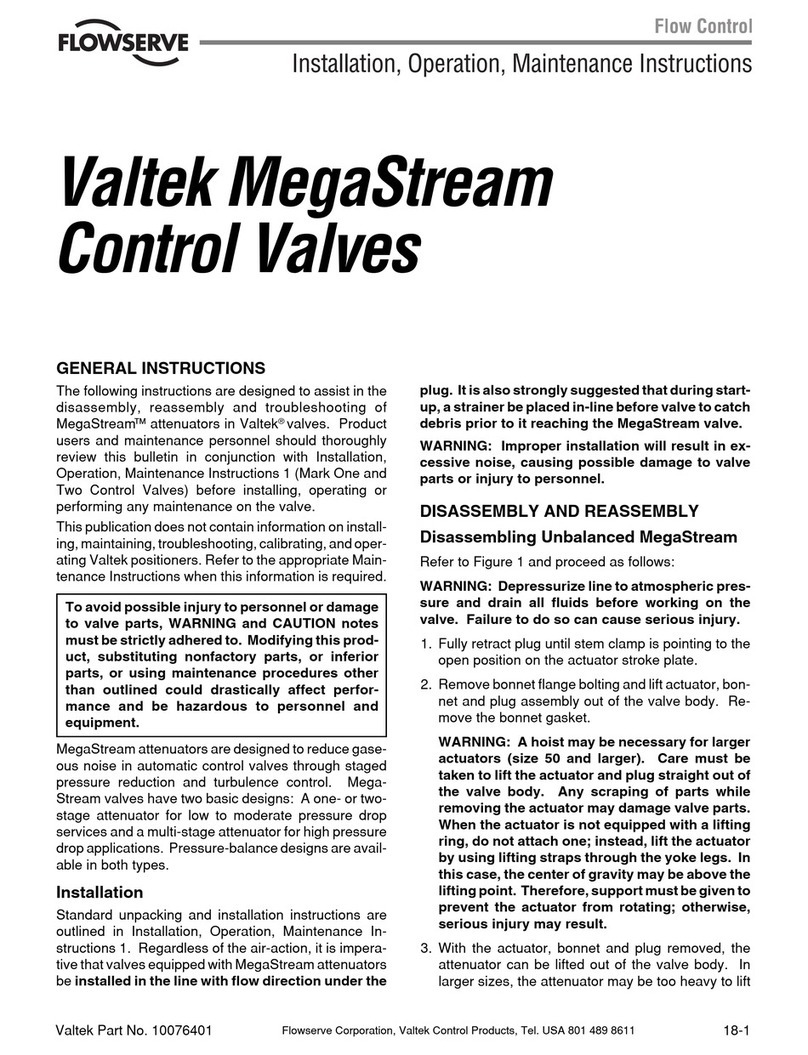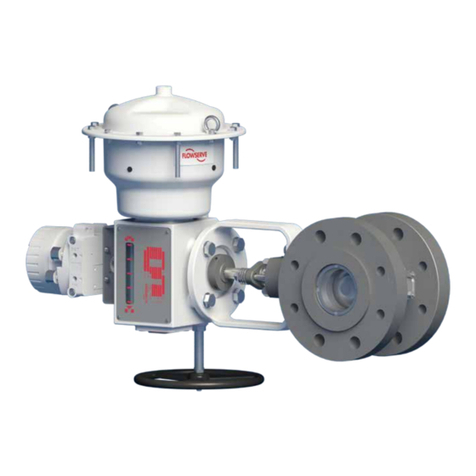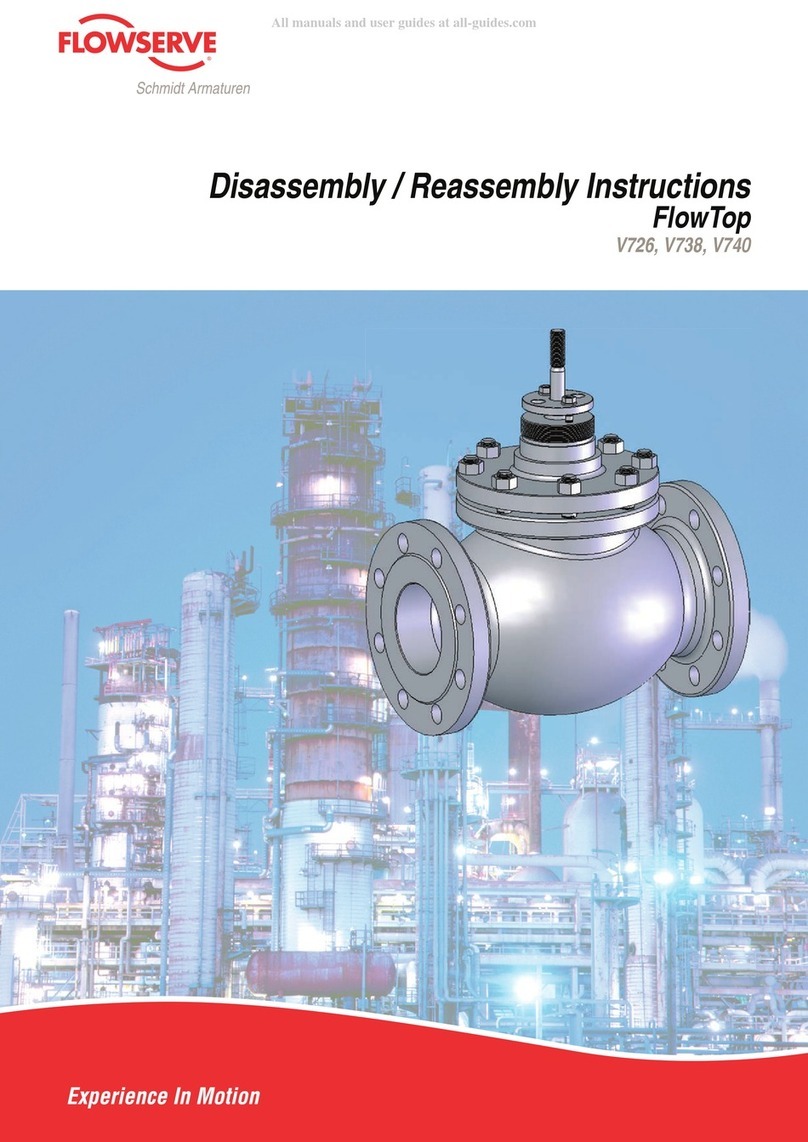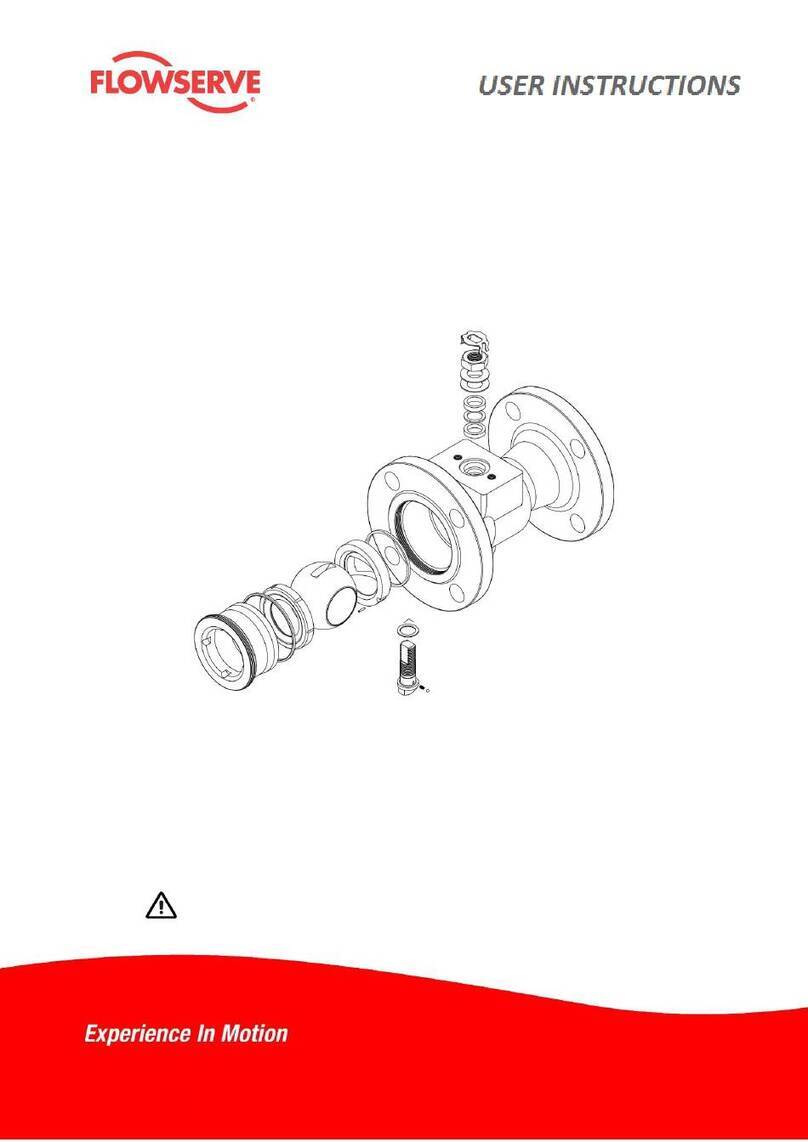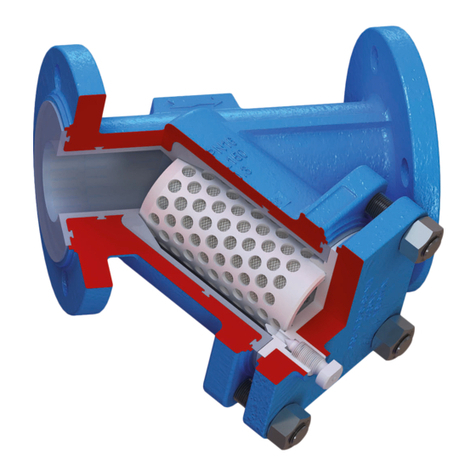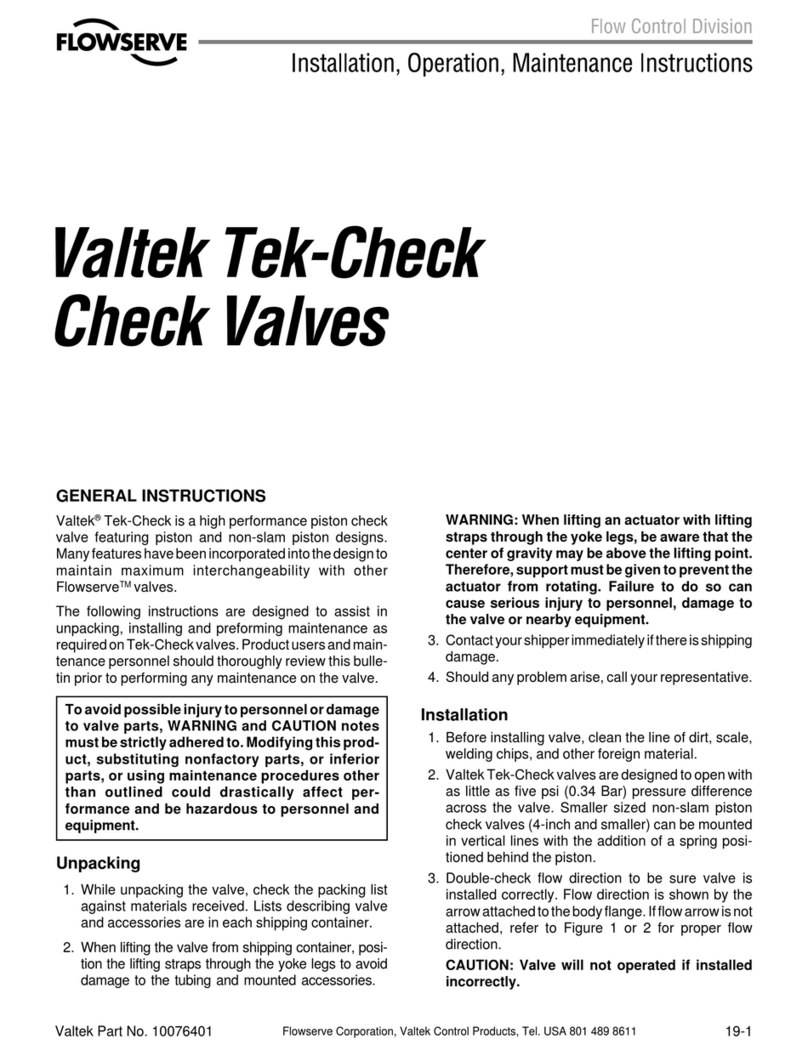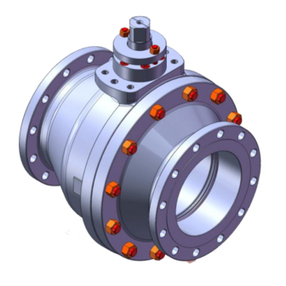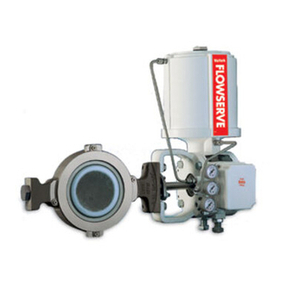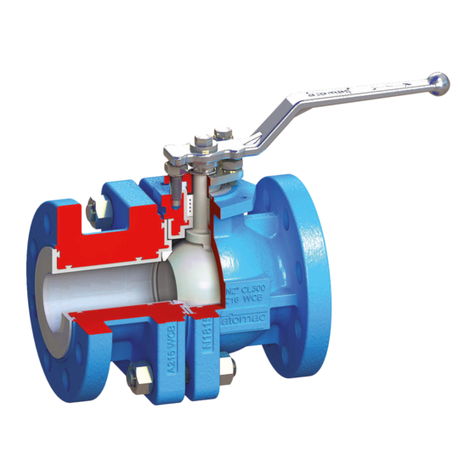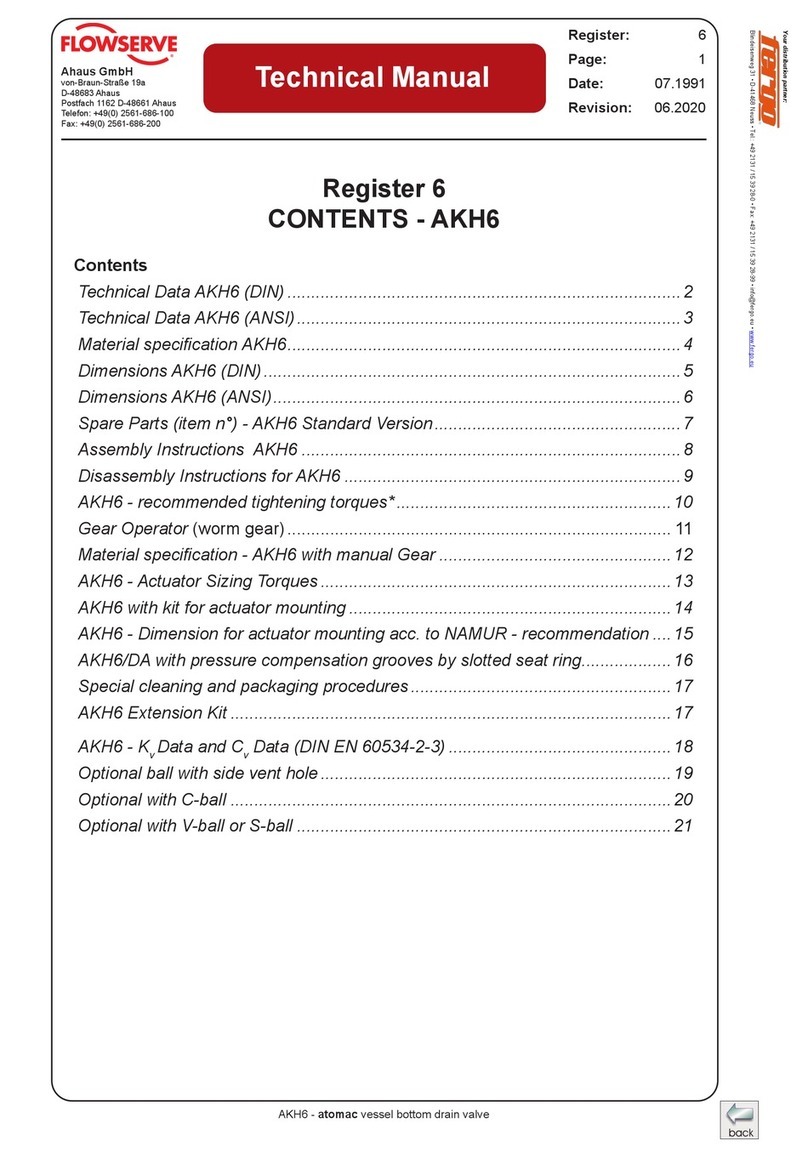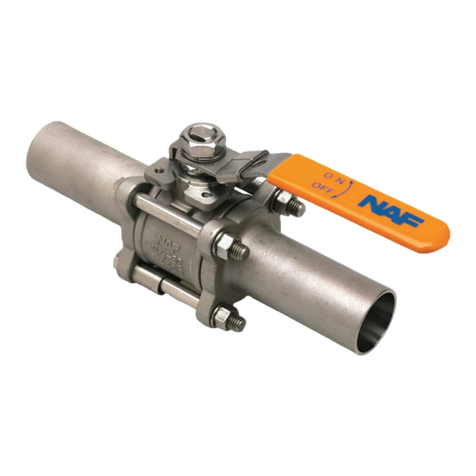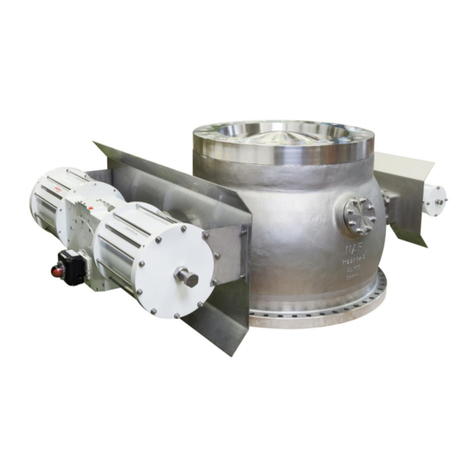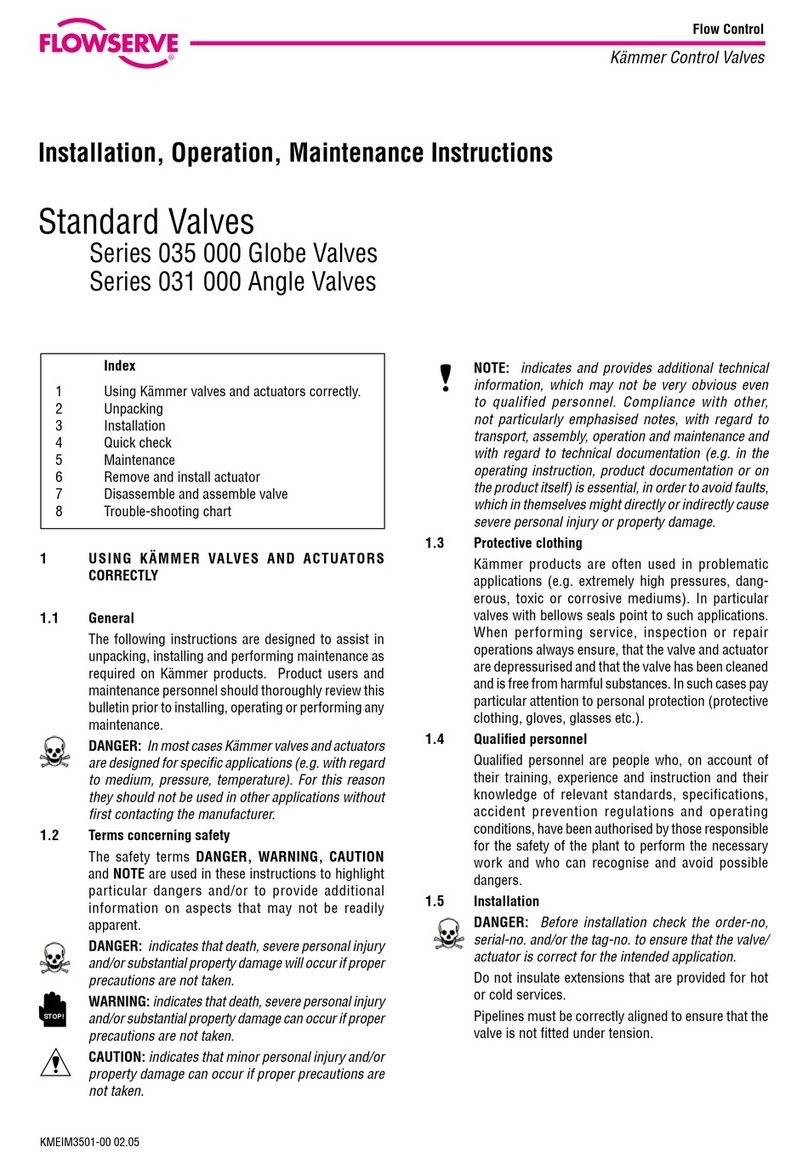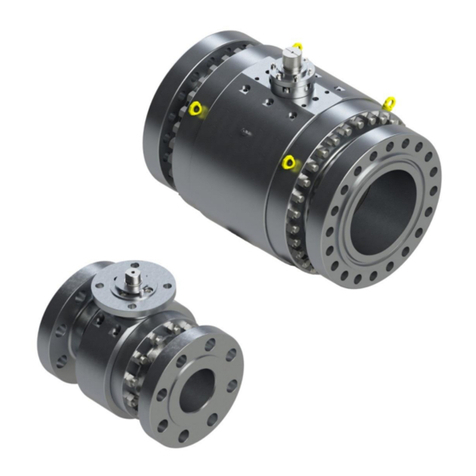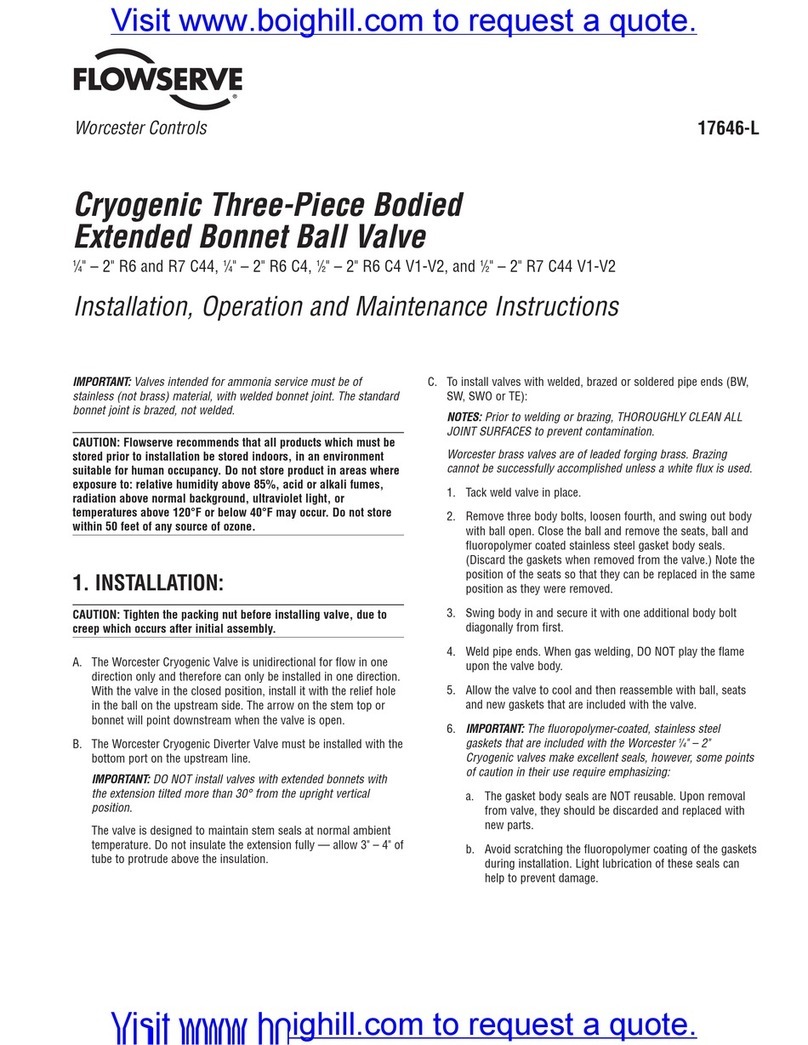
Flowserve.com 3
VAIOM000103-02 (EN/AQ) March 2020
Valtek®Control Products Mark 100™ and Mark 100SC Control Valves
The following instructions are designed to assist in unpacking,
installing and performing maintenance as required on Valtek
Mark 100 and Mark 100SC control valves. Product users and
maintenance personnel should thoroughly review this bulletin
prior to installing, operating or performing any maintenance on
the valves. Separate Installation, Operation and Maintenance
instructions cover additional features (such as actuators,
handwheels, packing and positioners).
To avoid possible injury to personnel or damage to valve parts,
WARNING and CAUTION notes must be strictly followed.
Modifying this product, substituting non-factory parts, or using
maintenance procedures other than outlined could drastically
affect performance, be hazardous to personnel and equipment,
and may void existing warranties.
cWARNING: Standard industry safety practices must be
adhered to when working on this or any other process
control product. Specifically, personal protective and
lifting devices must be used as warranted.
NOTE ON FASTENERS: Selecting the proper fastener material is
the responsibility of the customer. Typically, the supplier does
not know what the valve service conditions or environment may
be. Flowserve’s standard body bolting material is B7/2H. B8
(stainless steel) is optional for applications more than 425°C
(800°F) and with stainless steel or alloy-body valves. The
customer, therefore, must consider the material’s resistance
to stress corrosion cracking in addition to general corrosion.
As with any mechanical equipment, periodic inspection and
maintenance are required. For more information about fastener
materials, contact your Flowserve representative.
1
General
information
1.2 Applicability
The following instructions are applicable to the maintenance
and installation of Valtek Mark 100 and Mark 100SC globe
and angle body design control valves. These instructions
cannot claim to cover all details of all possible product
variations, nor can they provide information for every possible
example of installation, operation or maintenance. This means
that the instructions normally include only the directions to
be followed by qualified personnel using the product for its
defined purpose. If there are any uncertainties in this respect,
particularly in the event of missing product-related information,
clarification must be obtained via the appropriate Flowserve
sales office. All Flowserve User Manuals are available at
www.flowserve.com.
